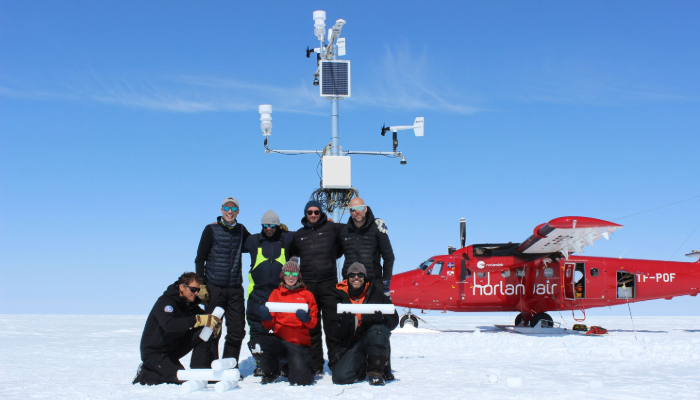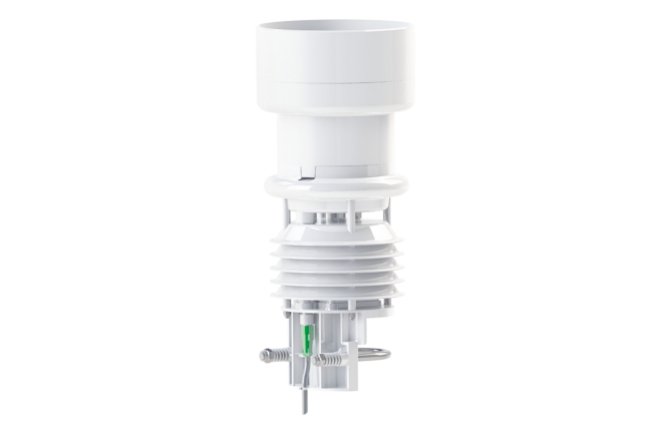In the face of global warming, understanding the behavior of polar ice sheets has taken on new urgency. The Greenland ice sheet, the second-largest body of ice on the planet after the Antarctic ice sheet, plays a critical role in this context, contributing greatly to rising sea levels. In fact, if the entire Greenland ice sheet were to melt away it could contribute to a global sea level rise of up to 7m.
To unravel the intricacies of this dynamic ice sheet, the Geological Survey of Denmark and Greenland (GEUS) has deployed advanced monitoring methods and technology to paint a comprehensive landscape of the melting phenomena. Among the equipment being used is the Lufft WS401, a compact all-in-one weather sensor that supports research at monitoring stations across Greenland.
Quantifying the mass balance
The mass balance of the ice sheet, which determines the net gain or loss of ice, is a key indicator of its contribution to global sea level rise. The mass balance results from a complex interplay of various processes, including mass gain through precipitation and mass loss through surface melt, basal melt, evaporation, sublimation and calving.
To better understand the variations of the mass balance, the monitoring efforts are managed by two separate projects that divide the ice sheet into two distinct zones: the ablation zone, where ice is melting at the sheet’s periphery, and the accumulation zone, where precipitation accumulates in the central region.
In 2007, Denmark launched the Program for Monitoring of the Greenland Ice Sheet (PROMICE) to assess the mass loss in the ablation zone. In the accumulation zone, GEUS recently took over the operation of the Greenland Climate Network (GC-Net), which was established in 1995. Lufft WS401 compact weather sensors are deployed in both zones to measure essential meteorological parameters that aid in understanding the ice sheet’s mass balance.
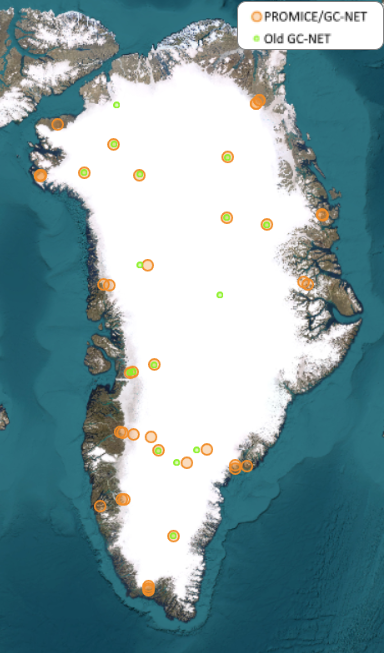
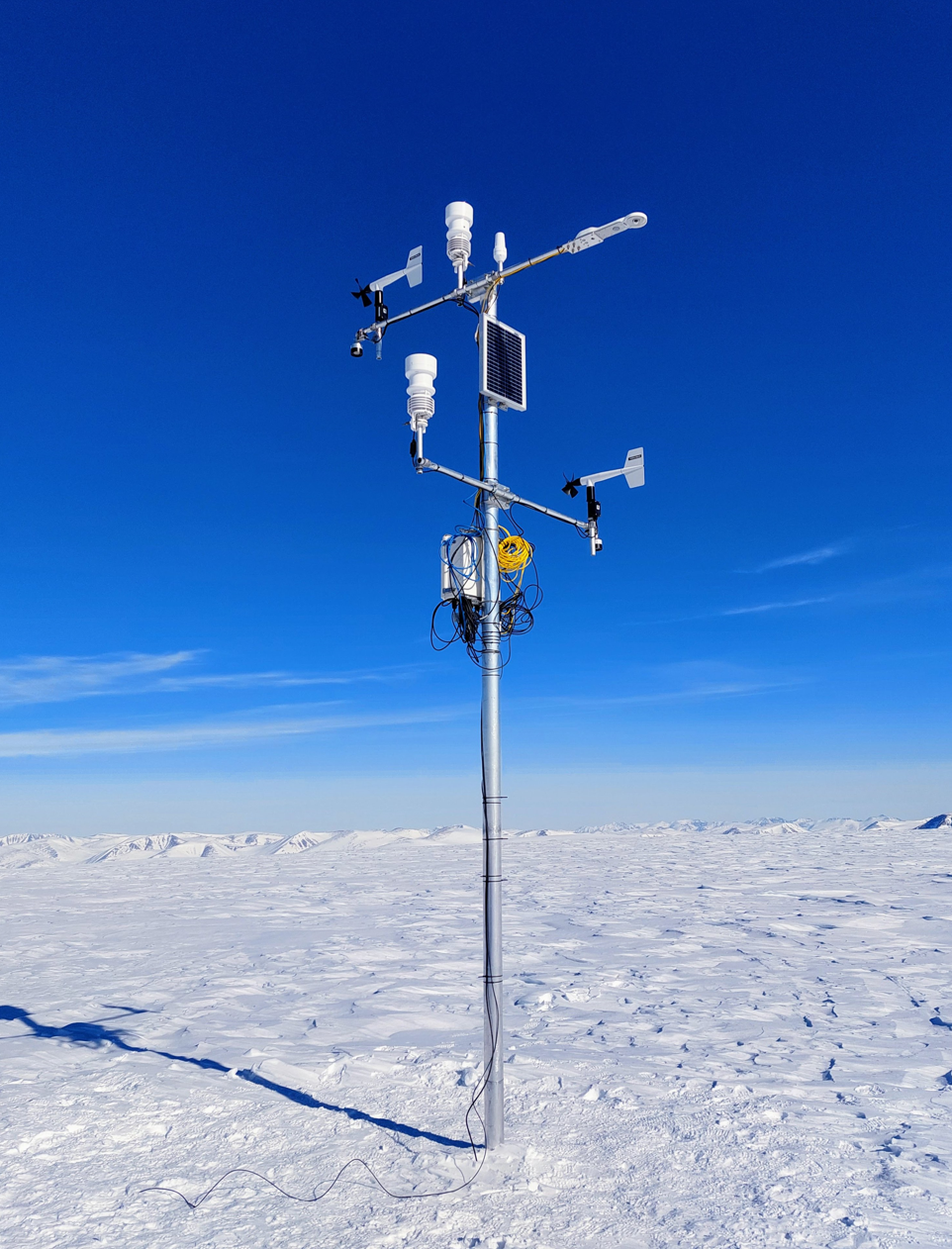
Monitoring the ice flux
To gain a comprehensive understanding of near-surface climate in the accumulation zone, GEUS mounted two Lufft WS401 weather sensors at different heights at 16 of the 44 stations. This approach enables the team to measure gradients and enhances the overall accuracy in determining the mass balance.
Additionally, GEUS employs other instrumentation, such as ice loss measurement systems, wind speed and direction sensors, solar radiation instruments and inclination sensors, to create a holistic view of the ice sheet’s dynamics. The solar radiation instrumentation used to determine evaporation and other phenomena is also developed by OTT HydroMet under the product brand name Kipp & Zonen.
The Lufft WS401 is an all-in-one compact weather sensor that measures temperature, relative humidity, precipitation and air pressure. This instrument’s ability to measure aspirated temperature improves data accuracy while providing other meteorological parameters for assessing energy changes on the ice sheet’s surface.
The WS401’s compact design and multifunctionality make it an ideal choice for the challenging conditions in the polar region. Lufft is one of OTT HydroMet’s trusted product brands for environmental monitoring, along with Sutron and Kipp & Zonen.
Overcoming the elements
As you can imagine, monitoring the Greenland ice sheet in remote and harsh environments poses unique challenges. The extreme cold temperatures and variable winds require robust equipment. In the often transient ablation zone, the tripod-mounted stations can flip over due to strong winds; in the accumulation zone, sensors can be drilled into the ice. Snow accumulation can cover solar panels, leading to the stations losing power, and the frigid temperatures in the region often result in battery failures.
Transporting equipment to these remote locations is a logistical challenge. Ships are used as the primary mode of transportation to the port, and helicopters are used to access remote sites. Once on the ice sheet, researchers also use skis to cross the landscape. Most stations are visited annually, but some in the northern regions receive visits only every three years, hence the necessity for robust instrumentation.
Influencing climate action
The data collected by GEUS is instrumental in enabling data-informed decisions and supporting political action. By supplying the Danish Meteorological Institute with critical weather data, GEUS is transitioning from research-based to operational-based measurements, necessitating standardized stations to meet global requirements. Additionally, the data provided by GEUS contributes greatly to the Intergovernmental Panel on Climate Change (IPCC) reports, further underscoring the relevance of the research on a global scale.
As we move into an uncertain future, the good news is that the PROMICE and GC-Net projects are being financially supported by the Danish government, ensuring a consistent source of funding for long-term monitoring.
“The research results in one number for annual sea level rise, but this is just the tip of the iceberg. There is a lot of work, sensors and data processing that contribute to this number. We can pass this information along to decision makers and be a part of the climatologic discussion.”
Dr. Jakob Jakobsen, Glacier Lab Leader, GEUS
Advancing mass balance models
According to GEUS, the Greenland ice sheet has now receded for 27 years in a row. In this year’s melting season, it has shrunk by approximately 200 gigatons.
Predicting the precise impact on sea level rise over the next few decades remains a complex task due to the myriad of variables at play. While mass loss from the ice sheet is a critical parameter, the rise in sea temperature and its influence on water volume and other factors must also be considered.
Dr. Jakob Jakobsen, glacier lab leader at GEUS, says, “The research results in one number for annual sea level rise, but this is just the tip of the iceberg. There is a lot of work, sensors and data processing that contribute to this number. We can pass this information along to decision makers and be a part of the climatologic discussion.”
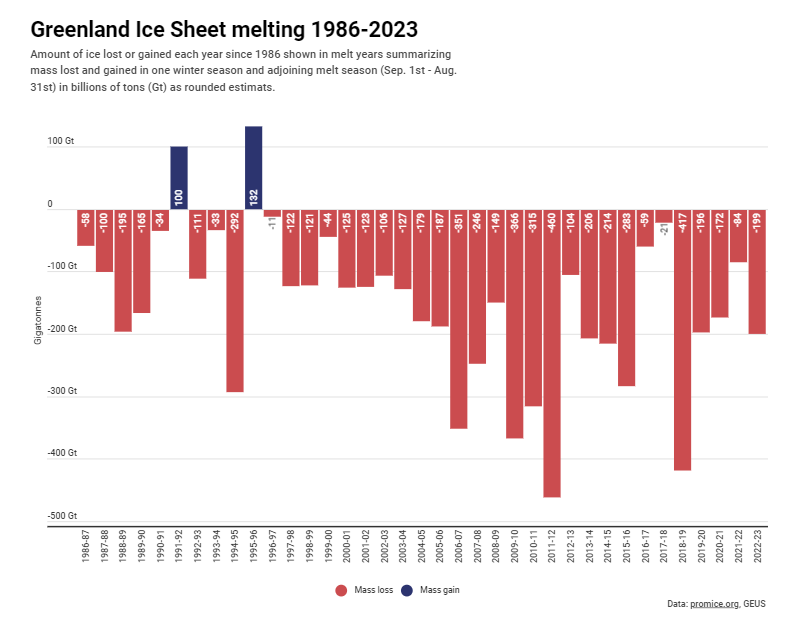
The future vision for PROMICE and GC-Net includes the deployment of new-generation stations, equipped with the Lufft WS401, alongside existing ones. As the sites are only frequented at most once a year, upgrading these sites can take time. The team is also focused on higher-precision positioning to compensate for station drift due to the floating ice surface, as well as wind-powered instrumentation to improve efficiency and reduce costs. Development efforts are ongoing to enhance maintenance processes and explore alternative methods for measuring accumulation and ablation.
The role of GEUS in monitoring the Greenland ice sheet is pivotal in the effort to understand and mitigate the impacts of global warming. The Lufft WS401 sensor and environmental monitoring technology provide crucial data for assessing the ice sheet’s mass balance. As we continue to face challenges, these scientific endeavors play a vital role in realizing a climate-informed future.
All images courtesy of the Geological Survey of Denmark and Greenland (GEUS)
Further Reading
- Learn more about PROMICE & GC-NET
- An Expedition to Canada’s Highest Weather Station at Mount Logan
- Measuring Air Quality in Switzerland’s Lofty Mountains with Pluvio²
Interested in learning how Lufft all-in-one weather sensors can enhance your monitoring efforts?
